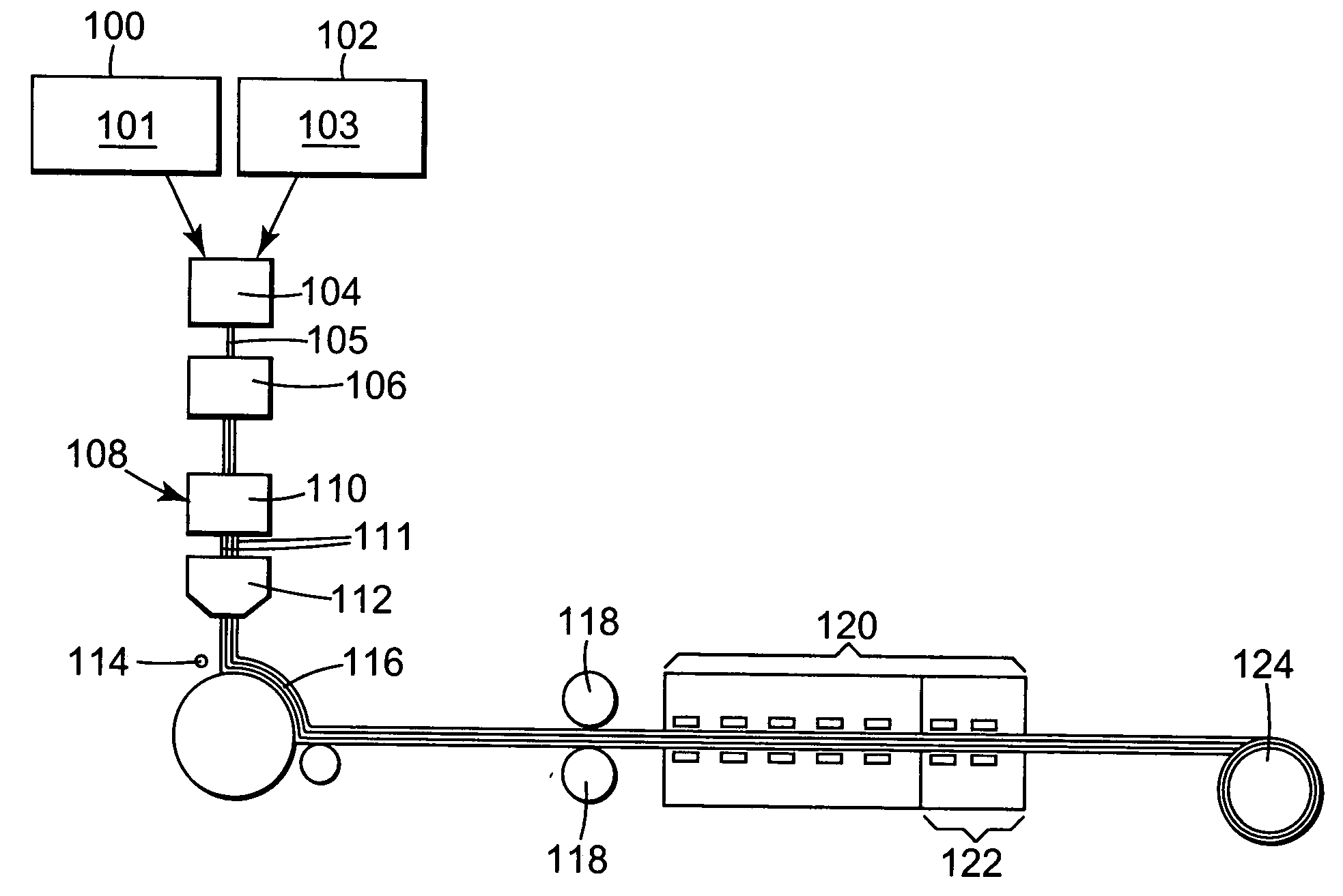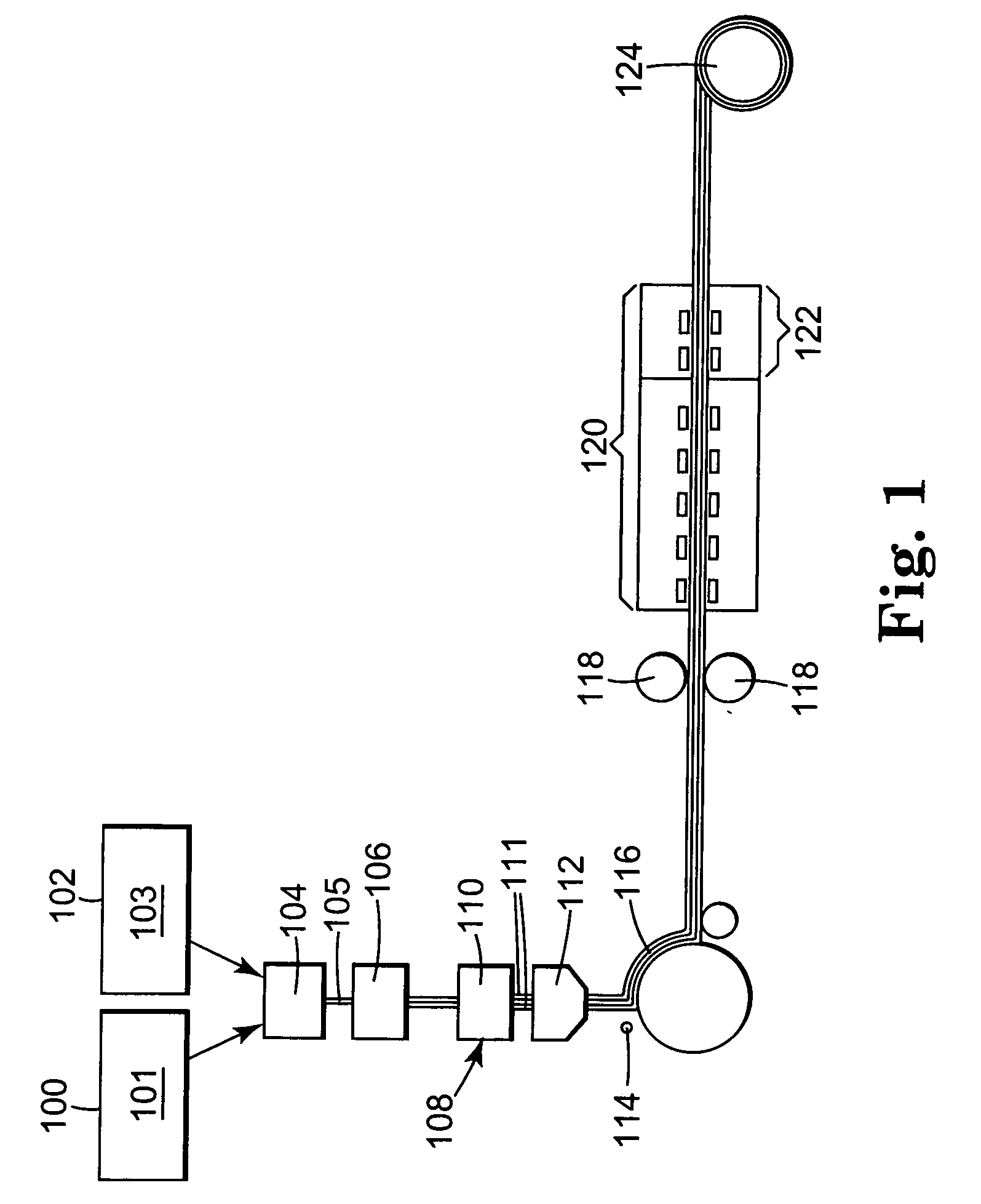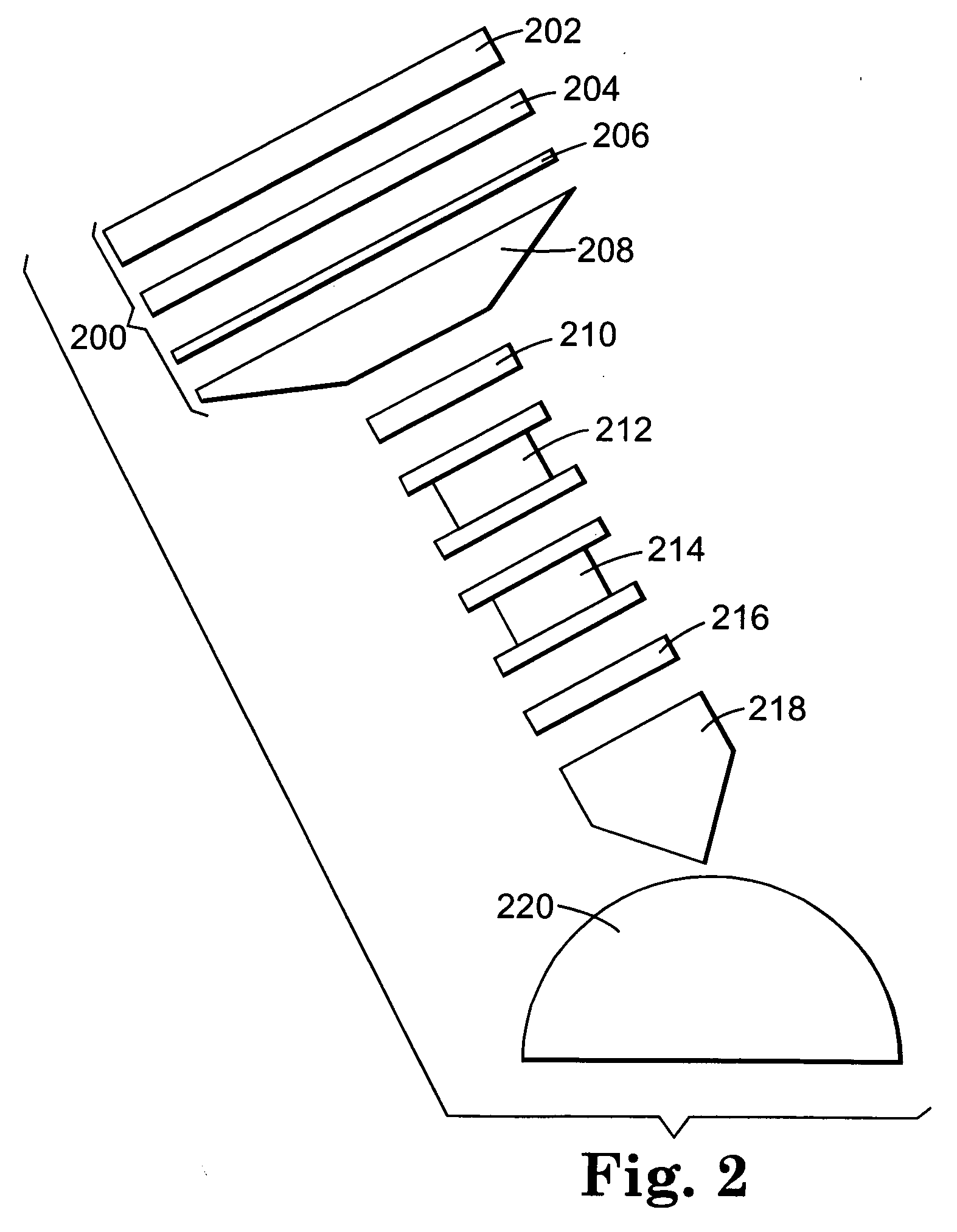Multilayer optical film with antistatic additive
a multi-layer, additive technology, applied in the direction of synthetic resin layered products, transportation and packaging, other domestic articles, etc., can solve the problems of copen resin birefringence, complex operation, not easily changed, etc., to achieve the effect of reducing the birefringence of copen resin
- Summary
- Abstract
- Description
- Claims
- Application Information
AI Technical Summary
Problems solved by technology
Method used
Image
Examples
Embodiment Construction
[0022] Various process considerations are important in making high quality polymeric multilayer optical films and other optical devices in accordance with the present invention. Such optical films include, but are not limited to, interference polarizers, mirrors, colored films, and combinations thereof. The films are optically effective over diverse portions of the ultraviolet, visible, and infrared spectra. Of particular interest are coextruded polymeric multilayer optical films having one or more layers that are birefringent in nature. The process conditions used to make each depends in part on (1) the particular resin system used and (2) the desired optical properties of the final film.
[0023] A preferred method of making the multilayer film of the present invention is illustrated schematically in FIG. 1. Materials 100 and 102, selected to have suitably different optical properties, are heated above their melting and / or glass transition temperatures and fed into a multilayer feed...
PUM
| Property | Measurement | Unit |
|---|---|---|
| reflectivity | aaaaa | aaaaa |
| melt temperature | aaaaa | aaaaa |
| Stretch ratios | aaaaa | aaaaa |
Abstract
Description
Claims
Application Information
 Login to View More
Login to View More - R&D
- Intellectual Property
- Life Sciences
- Materials
- Tech Scout
- Unparalleled Data Quality
- Higher Quality Content
- 60% Fewer Hallucinations
Browse by: Latest US Patents, China's latest patents, Technical Efficacy Thesaurus, Application Domain, Technology Topic, Popular Technical Reports.
© 2025 PatSnap. All rights reserved.Legal|Privacy policy|Modern Slavery Act Transparency Statement|Sitemap|About US| Contact US: help@patsnap.com



